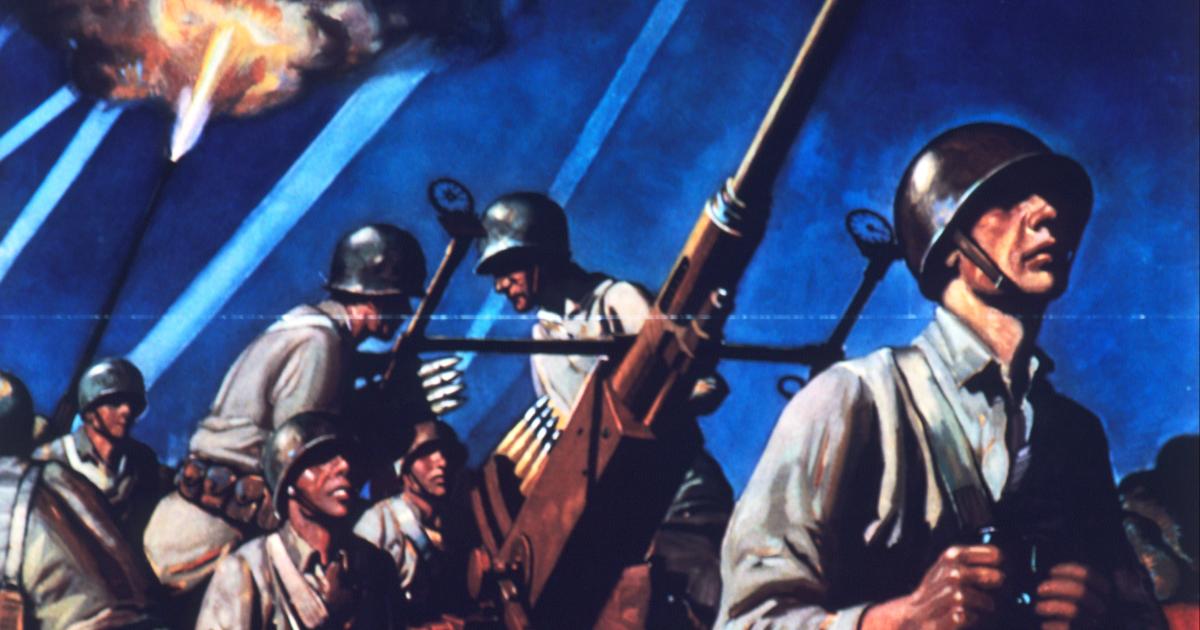- Military
- Innovation
- China
- Confronting and Competing with China
- Revitalizing History
As China and the United States continue to advance in military technology, the nature of combat for their soldiers is changing at an unprecedented pace. A future confrontation between these two global powers would not resemble past wars fought with traditional infantry tactics and conventional firepower. Instead, it would be shaped by artificial intelligence, drone warfare, cyber operations, and next-generation battlefield systems that would redefine the roles of individual soldiers. While both nations are integrating cutting-edge technologies into their armed forces, the way these developments affect their troops will differ due to variations in military doctrine, strategic priorities, and technological capabilities.
For U.S. soldiers, battlefield operations will increasingly depend on artificial intelligence-enhanced decision-making, autonomous support systems, and networked warfare. The U.S. military has invested heavily in programs like the Joint All-Domain Command and Control (JADC2), a system designed to link every soldier, drone, aircraft, and naval vessel into a single real-time information-sharing network. This means that American troops will operate with an unprecedented level of situational awareness, with AI systems continuously analyzing battlefield conditions and providing strategic recommendations. Augmented reality (AR) visors integrated into helmets will allow soldiers to see real-time drone feeds, enemy positions, and suggested maneuvers, drastically reducing the time required for decision-making. However, this increased reliance on digital infrastructure also presents vulnerabilities. In a conflict with China, U.S. troops would likely face sophisticated cyberattacks aimed at disrupting these battlefield networks, forcing them to operate in contested electronic environments where their communications could be jammed or manipulated.
In terms of personal weaponry, U.S. soldiers will be equipped with next-generation firearms featuring AI-assisted targeting and smart ammunition capable of adjusting trajectory mid-flight. Precision-guided weapons, such as computer-enhanced sniper rifles and electromagnetic railguns, will allow soldiers to engage enemies with extreme accuracy at long distances. At the same time, U.S. troops will deploy handheld directed-energy weapons and electromagnetic pulse (EMP) devices to counter China’s growing reliance on AI-driven drone swarms. Robotics will also play a crucial role, with autonomous ground vehicles acting as battlefield assistants—carrying supplies, providing cover fire, and evacuating wounded personnel. Additionally, exoskeleton technology is being developed to enhance soldier endurance and strength, allowing for greater mobility and sustained combat effectiveness.
On the other side, Chinese soldiers will experience a technological transformation that aligns with the People’s Liberation Army’s (PLA) doctrine of “intelligentized warfare.” Unlike the U.S. approach, which focuses on integrating AI into human decision-making, China is pushing toward a more autonomous model where AI-driven drones and robotic systems take on an increasingly direct combat role. The PLA has invested heavily in drone swarm technology, designed to overwhelm enemy forces with vast numbers of AI-controlled UAVs operating in coordinated formations. Chinese infantry units will be supported by robotic squads, autonomous artillery systems, and self-driving tanks that require minimal human oversight. This means that in a future conflict, Chinese soldiers may act more as battlefield coordinators, directing robotic assets rather than engaging in traditional frontline combat.
Chinese soldiers will also benefit from AI-driven battlefield analysis tools that can predict enemy movements, optimize attack strategies, and provide real-time intelligence through augmented reality interfaces. Like their American counterparts, they will use AR-equipped helmets, but their system will be more centralized, with AI algorithms in command centers dictating tactical decisions. The PLA’s emphasis on cyber warfare will also affect how Chinese soldiers operate. They will likely be trained to exploit enemy electronic systems, using cyber-enabled deception tactics to disrupt U.S. battlefield networks and electronic infrastructure. This focus on cyber warfare may allow China to neutralize U.S. technological advantages, forcing American troops to operate under degraded conditions where AI assistance and digital reconnaissance tools become unreliable.
The biggest difference between U.S. and Chinese soldiers in a future war will be the level of autonomy given to AI in combat decision-making. While American forces will integrate AI as an assistive tool, the PLA’s doctrine suggests a higher degree of reliance on AI to conduct autonomous operations, potentially reducing the role of human soldiers in direct combat. This could make China’s forces more effective in swarm tactics and coordinated strikes but may also introduce unpredictability if AI-driven systems make errors or become compromised.
Another key contrast lies in logistics and battlefield sustainability. The U.S. military is working toward making its infantry forces more self-sufficient by incorporating AI-managed supply chains, autonomous resupply drones, and robotic medics. This could allow American soldiers to maintain prolonged operations without relying on traditional supply routes, reducing their logistical vulnerabilities. In contrast, China’s approach leans toward rapid, overwhelming force projection using AI-coordinated mass mobilization. The PLA is likely to deploy soldiers in a highly mechanized environment where large-scale drone warfare, hypersonic missile support, and electronic warfare units create a battlefield where speed and information dominance dictate outcomes.
Both nations are equipping their soldiers with high-tech personal protection, including adaptive body armor that can absorb high-velocity impacts and reduce heat signatures to counter AI-driven targeting systems. However, as AI-driven targeting improves, simply wearing advanced armor will not guarantee survival. Soldiers on both sides will need to rely on electronic countermeasures, stealth tactics, and AI-driven deception strategies to evade detection by enemy drones and automated weapons.
Ultimately, while U.S. and Chinese soldiers will both experience a battlefield where machines play an increasingly central role, their experiences will differ based on their respective military doctrines. U.S. soldiers will act as technologically enhanced warriors, operating in a highly connected battlefield where AI serves as an adviser but not the final decision-maker. In contrast, Chinese soldiers will likely serve as AI-enabled coordinators, directing large-scale robotic and drone forces where AI takes on a more autonomous role in executing battlefield operations. This fundamental difference could determine how a U.S.-China conflict unfolds, with the U.S. prioritizing human-machine collaboration and China leveraging AI-driven automation and overwhelming force projection. Regardless of who prevails, the warfighter of the future will be fundamentally different from those of the past, operating in a combat environment where AI, robotics, and cyber warfare redefine the nature of military engagement.

















